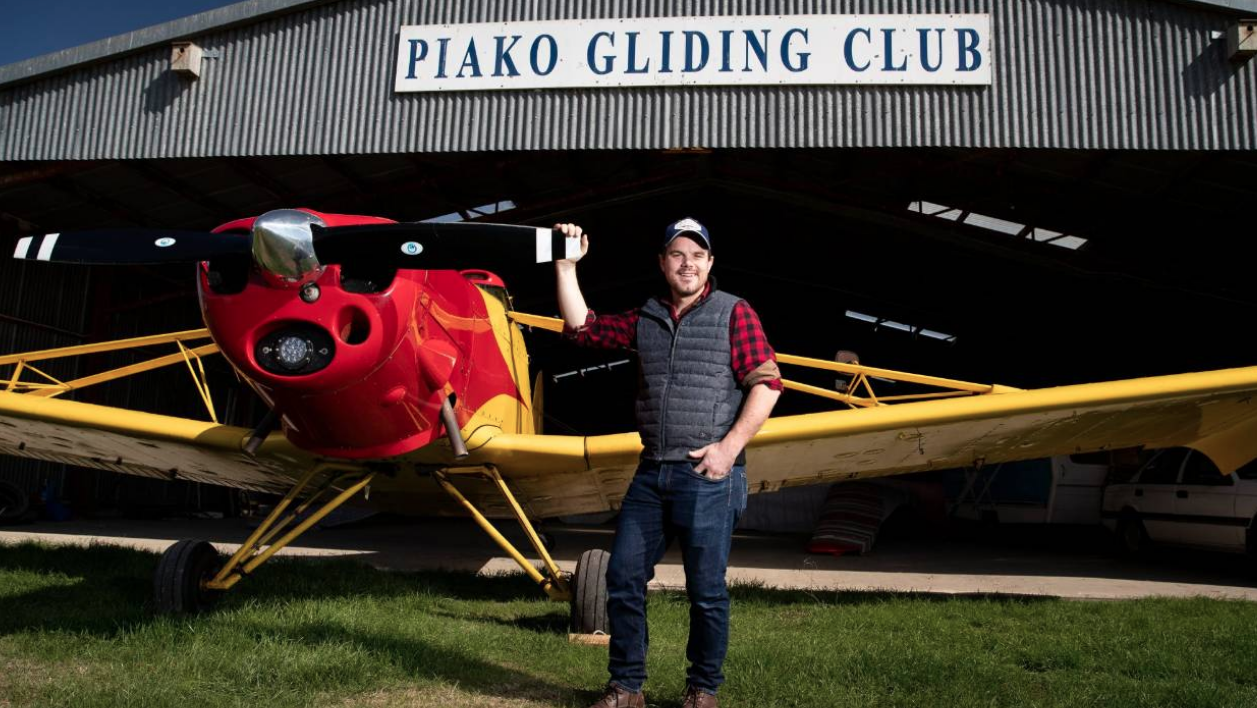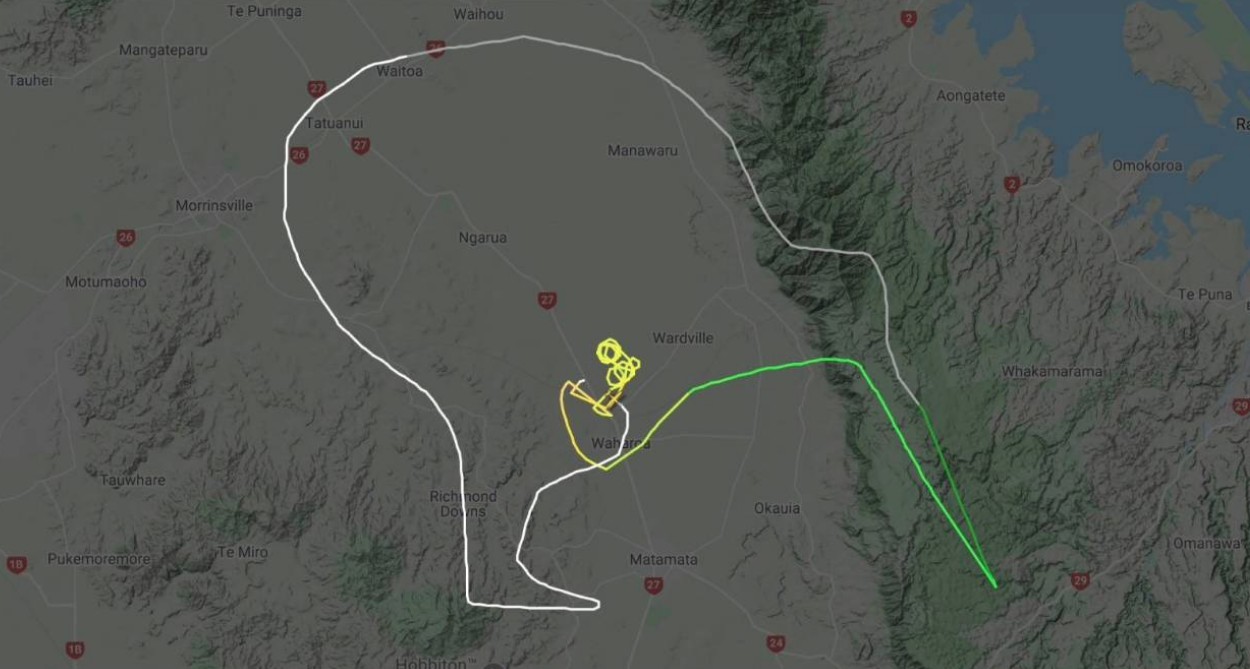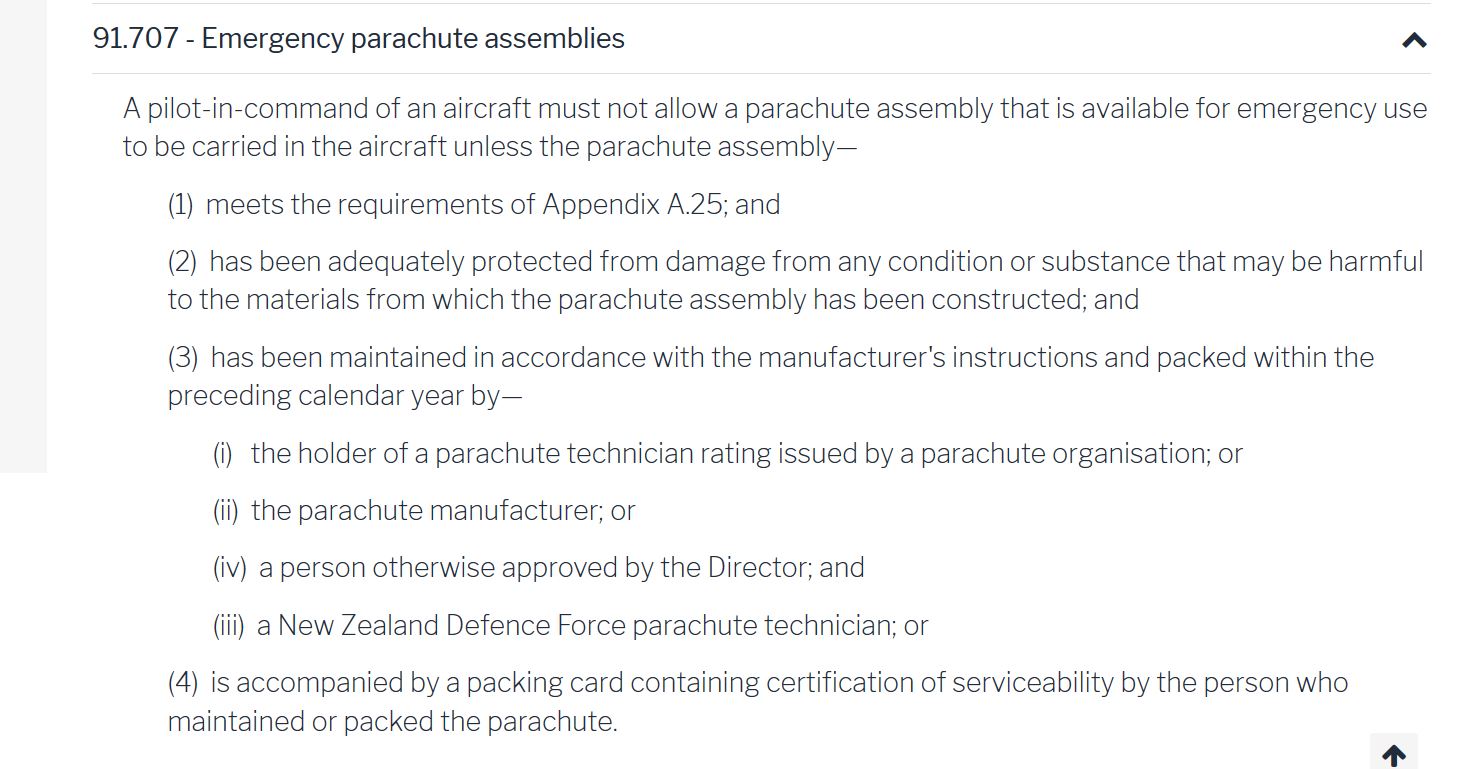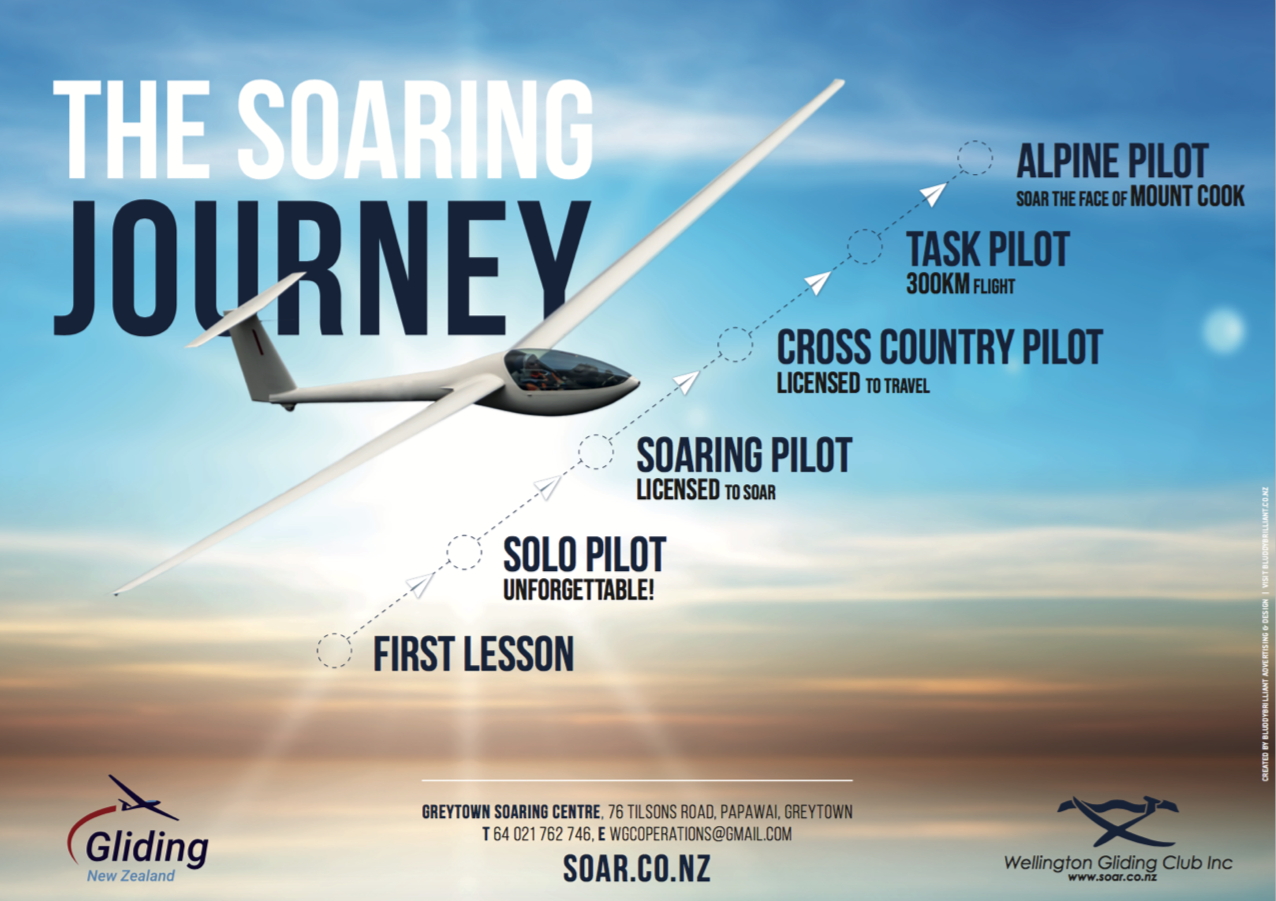GNZ Newsletter
May 2020

From the president

Welcome to the May GNZ newsletter.
Well wasn't April one for the record books.
For all the wrong reasons of course but part of the beauty of life is it can throw you a left field curve ball when you are least expecting it. How you deal with it is what defines your character, more so than the day to day stuff ever does.
So awesome to see that our gliding folk have responded with much gusto, via Zoom meetings, Webinars, Online competitions, blogs, videos, cartoons, stories and much more.
As a glider pilot knows, the sun always shines above the clouds.
Steve Wallace
GNZ President
Congratulations
BRUCE CUNNINGHAM - for turning 100 years young
Bruce Cunningham was secretary of the then New Zealand Gliding Association (now GNZ) for over 44 years, from the mid 60's through to his 'retirement' in 2010.
Draped over his shoulder in the photo below is part of his silk parachute that he used to bail out of his burning Lancaster bomber over Belgium in 1944. He landed on the roof of a cafe and part of the parachute was crafted into a wedding dress for the cafe owners's daughter. He spent time in detention camps in Germany and Poland so I know a wee COVID 19 lockdown would not bother Bruce. Happy Birthday, GNZ salutes you.

SCOTT MONTAGU - for getting to go flying (legally) during lockdown and for getting gliding in the press with a flight track that drew out a giant kiwi.


JORDAN KERR - Race One winner of the inaugural Gliding NZ Condor Champs
Flown from Springfield

MARK SHRIMPTON - Race Two winner of the Gliding NZ Condor Champs
Flown from Nelson Lakes

The inaugural Gliding NZ Condor Champs
As mentioned in last months newsletter the Canterbury Gliding Club were looking to kick off a Condor 2 online gliding contest. Well it's up and running as a 7 race, around New Zealand event, that has attracted an international field of 55 pilots from 9 countries thus far. Races have been flown from Springfield, Nelson Lakes and Matamata with the next race due to be flown from Taupo. Big ups to the unstoppable Abbey Delore and her team for getting this 'off the ground'.


When you can't go flying
At least you have the photos & videos
of when you did
Been watching some great gliding videos lately?
Want to make your own but need to know how to mount a camera to get the best results?
Then check out this video and very cool glider specific camera mounting product from our mate Stefan in Germany.
GNZ AGM UPDATE
the clouds of uncertainty herald the approach of the winds of change
in other words, it'll probably be a Zoom meeting
GNZ AGM TAUPO
With the Hilton Taupo closing its' doors until July at the earliest and uncertainty about what the rules around conference type gatherings will be in Levels 2 & 1 and even if or when we will reach these levels, it is most likely the GNZ AGM will be an online affair this year. A decision will be made at this months Exec Meeting and all clubs will be advised as to the how, when, and where.
Don't forget about your parachute
It's not just a cushion
As we all, hopefully in the near future, start bringing our gliders out of hibernation and give them a thorough check over before flying, it is important not to forget about the parachute. It's not just a cushion! You will of course all be familiar with CAA Rule 91.707


For an excellent article on parachute training by Jonathan Pote click the foldable below.
Parachute Training
PARACHUTE TRAINING MAY 2013 Jonathan Pote recalls a session from the past On Wednesday eight fortunate members joined Sev at PTSU for an excellent two-hour session of training. He covered a very comprehensive syllabus in detail too great to record here but I will try to outline the salient points.
Firstly ‘pre-flight’ your parachute as if your life depended on it. It may, and that is the only reason you are wearing it. Firstly the repacking date. This not only tells you when it is due to be packed, but also when it was last packed. The longer ago that is, the more chance of a defect. Do it systematically, with the parachute itself as your crib. Open the Velcro to check the pins are not only inserted but would pull free easily when it matters. Tuck away any loose material or it may snag. Make sure there is no chemical contamination (oil and urine are both possible) and that it has been stored in a dry place. Check the swage on the rip-cord handle. If the handle comes free, you are dead.
Fully satisfied it is serviceable (with a more experienced person helping you if needed) then put it on. The time the harness needs to be correctly fitted is when the parachute opens (which it does with considerable force). This is not a lot between too tight for comfort and too loose for safety, but there is a compromise degree of tightness. Remember that when it opens, the pack decompresses and the straps will loosen a little. Route the belly strap correctly. The Velcro is there merely to tidy up the loose end, not secure it. Make sure it is correctly routed through the buckle and will tighten under strain. Tuck away loose strap ends as these can potentially snag in the cockpit as you try to exit in a hurry. Worse still, if you include one in your vice-like grip on the handle, you will not be able to pull it far enough! Just once, get someone to try and pull the parachute off over your head to check the harness is tight enough. The green parachute is a worse offender here, and you may be surprised how easily it comes off. He did a demo on this, he had the side straps quite loose but the chute otherwise done up correctly. He bowed forward, kinda how you might if you were tumbling as you left the aircraft. The chute went over his head and landed on the floor in front of him, essentially completely separated from him. There was an open mouthed stunned silence. There is no problem with clipping the PLB into the chest strap and it is no use left in the glider.
Baling out. You have just one chance to get it right. At 1000’, the lowest realistic height to try, you will hit the ground ten seconds later if the canopy has not opened. Once the parachute is open, you will have about thirty seconds from 1000’. How you get out is your problem, and not even RNZAF pilots are taught a definite method. It is VERY good practice to treat every time you get out of a glider on the ground as a practice bail out. It will be harder, as the canopy is still on and there is no adrenaline explosion, but you can become familiar with bringing your legs back, pushing up on the cockpit sills, and exiting smoothly, realising how the wing gets in the way. You will also learn not to sub-consciously undo the parachute harness as well as the restraining harness. This has been done by professional pilots who then fell to their death and in the RAF it is mandatory to exit light trainers still wearing your parachute to drum this in. What to do once you are out was the purpose of our training session. Once out you WILL tumble, so roll into a ball as you find the handle and pull it immediately. Any delay rapidly uses up your height and increases the speed (and thus force) at which the canopy opens. Remember LOOK GRIP PULL (actually it is a push away from you). The grip includes both hands with at least one thumb through the handle. It must not include a loose leg strap end blown up by the slipstream. You should have “everything together” as the saying goes – be rolled up in a ball as you go out. Emergency parachutes open faster than sports versions for obvious reasons and a straight or arched back can be – and has – been broken by incorrect posture. Flailing limbs can tangle in lines, so ‘small is beautiful’. Any loose fitting clothes or strap ends will blow in the slipstream and be a problem. The PLB might hit you on the chin, but at least you have it with you. The pilot chute is spring loaded for faster deployment but even so may go between your legs as you tumble. Do not let go of the handle – you may have to pull it again. Having said all that, it is not nearly as simple as it may seem. Experience shows that the successful bale-out rate is far below 100%, and the culprit is the canopy. Sadly, it does not come away cleanly or predictably, side-hinged canopies being worse than front-hinged examples. Since the 1980s, DG and LS sailplanes have been fitted with Roeger Hooks which help considerably. If you want to maximise your chances, read the article below. Follow the link at the bottom to a very good summary “Parachute prepared?” as well. http://www.dg-flugzeugbau.de/roegerhaken-e.html
The Descent. The most important factor is your height. This may seem pretty obvious, but the reason to emphasise this is that for the last thousand feet or so you must concentrate on a proper landing stance to the exclusion of all else. Again, experienced jumpers have been hurt by being distracted and landing unexpectedly. Steering can be complex and varies with canopy type. If you own a parachute, then see it repacked and discuss steering and other details with the chap doing it. If you use a club parachute, then probably all you can do is experiment if you have time. DO NOT attempt to steer an improperly deployed canopy and do not forget to get ready for the landing in very good time. If the canopy forms two lobes because some lines are over the top of it, pulling on the lines to the smaller lobe might help, but again landing takes precedence. Landing with you back arched as you look up at the canopy would be a disaster.
The Landing. You MUST BE READY for this in good time. Forget about steering from about a thousand feet up. If collision with a building or whatever looms, DO NOT TRY TO FEND OFF. Pull in your arms, bend your neck and make a ball of your upper body. Yes it will hurt, but less than if you try to fend off. Ideally you should drift into wind but face or twist your feet crosswind, legs slightly bent and feet not flexed down. Your back should be slightly bent with the chin down a little. Elbows should be locked in so you are as compact as possible. Make the impact roll you over onto your side (we were able to practice this on soft mats, but the ground is too unforgiving for practice except for a jump off a low platform to get the leg bend correct, but not rolling over). If being dragged, and 10 – 15 knots will do that, grasp a big handful of rigging lines and haul them in to collapse the canopy. Landing in water is a problem but not a disaster. Release the harness as soon as you are in the water (height judgement over water is tricky. Some harnesses have quick release clips on the risers so know your parachute). Do not struggle as you will get entangled. You can breathe through a canopy if you raise a bit above your head, so systematically get yourself free from underneath it (any wind will almost certainly prevent the canopy settling over you). A parachute is in no way a buoyancy aid, but equally does not drag you down. If flying near or over extensive water you should have a life jacket on. To lock this into your memory, do you know a bit about - Inspection - Fitting - Time verses altitude - Bailing out and canopy deployment - Canopy control - Landing - Canopy Problems - Landing emergencies (trees, wires, buildings) - Wind and water FINALLY, take heart. Knowing a little and obeying the basic rules actually results in a lower injury rate than thinking you know a bit and trying to do too much.
Pilot Currency
When it comes to flying it is well known that there is an important correlation between currency and your ability to fly safely. The GNZ MOAP (Manaul of Approved Procedures) requires a Biennial Flight Review (BFR) and beyond this clubs set currency requirements that they consider appropriate to the type of aircraft they operate and the environment in which they operate. How current / safe will you be when you next take the controls. The BGA produced the below guide which you may find useful.

The Soaring Journey
A new poster, created by Brian Sharpe and his team that form the Membership Development Committee is now available for use by clubs in online and printed form. If you would like a copy of this with your club contact details at the bottom please email Brian.
bwsharpe@xtra.co.nz

Kevin's been at it again

Don't forget you can still support Youth Glide and have a laugh at the same time by purchasing Kevin's Glidertoons collection.

Stuff to keep you occupied
Pure Glide
Pure Glide is a great new You Tube channel with a growing number of interesting and educational videos all about gliding, put together by none other than our very own Tim Bromhead. Click the link below to view and subscribe.
Piako Gliding Club
Piako Gliding Club also have a new channel that they have been populating with educational webinars over the lockdown period. Click the link below to view and subscribe.
BGA Webinars
The BGA also have an excellent series of webinars on a wide range of topics. Click the link below to view and subscribe.
Incident Reports
No flying so no incidents to report but I do hear that so far during the Gliding NZ Condor Champs there have been collisions with terrain, collisions with other gliders and flutter where gliders have exceeded VNE at height in the wave. I hope these pilots have been filling out virtual OPS 10 forms!
Don't forget a link to the GNZ incident reporting form (OPS 10) can now be found in the very top menu bar on the GNZ homepage, just to the right of the 'Classified Adverts'. You can now fill this form out on your phone at the airfield so no excuses.

OPS 10 link: http://gliding.co.nz/wp-content/uploads/2019/06/OPS10v7f.pdf
Thanks for reading
All contributions, pics, videos and opinions welcome
EMAIL: steve@korcreative.nz